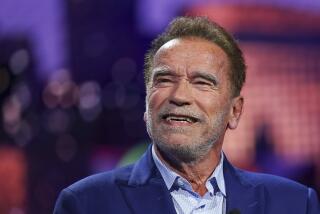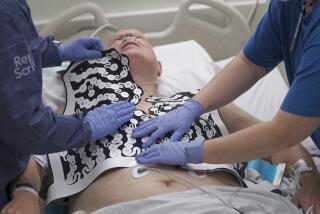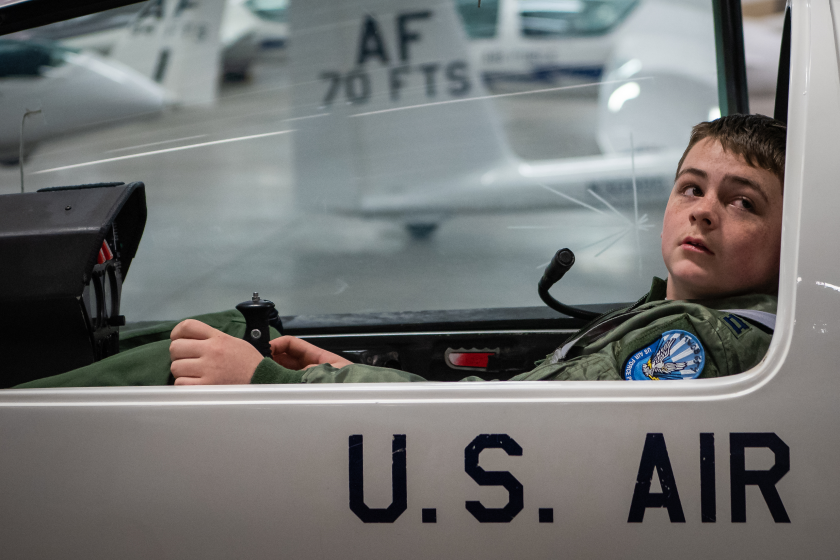Reducing the Trauma From Heart Surgery
- Share via
More than 400,000 Americans have a bypass every year to open blocked arteries leading to their hearts. The surgery is almost routine, the success rate is high and mortality is remarkably low, considering that surgeons are manipulating the pump that keeps us alive.
But the psychic toll--paid in pain and lost time--is also high. Bypass patients spend six to 10 days in the hospital and another two to three months recuperating at home before they return to a normal life.
The painful aftermath usually results not from the heart itself--even a couple of days after open-heart surgery, it’s pretty much back to normal, ready for business. Rather, the lengthy debilitation involves recovery from the massive trauma to the chest bone.
Cardiac surgeons saw the breastbone in half, pry it apart, and stretch muscles in the chest and back--all to lay the heart bare for their surgical instruments. The procedure is called a sternotomy.
“It’s pretty painful,” says Dr. Alfredo Trento, chairman of Cardiothoracic Surgery at Cedars-Sinai Medical Center. The breastbone can ache for weeks, and deep breaths may be agonizing.
But perhaps not much longer. Within the last two years, cardiac surgeons have developed techniques to perform so-called keyhole surgery on the heart through tiny incisions that cause less damage to the breastbone, or none at all.
Patients who have undergone the new techniques are often home from the hospital in a couple of days and back to work in a week or two.
The surgery could ultimately prove valuable for 90% of the 70,000 patients who undergo heart valve surgery in the United States each year, more than half of those who undergo a bypass, and perhaps for an equally large fraction of the 400,000 who undergo angioplasty.
Minimally invasive heart surgery “has taken off like wildfire,” said Dr. Steven Colvin of the New York University Medical Center, a pioneer who has performed the procedure more times than anyone else in the country. “People come from all over the East Coast, from the Midwest, to get it done. . . . It’s growing faster than I ever anticipated.”
The minimally invasive techniques “do as good a job as the standard approach,” Trento said, “but they are much less traumatic. The advantage of a small incision is that the pain is less. By the time you go home [from the hospital], you’re pretty much ready to go back to work.”
“This is the wave of the future,” added Dr. Namir Katkhouda, chief of minimally invasive surgery at University USC Hospital.
Others caution, however, that the long-term stability of repairs made with the new techniques has not been demonstrated, that the surgery takes longer to perform and is more expensive than conventional open-heart surgery, that it has so far been performed only on a few hundred patients around the world and that its safety has not been proved.
Such surgery “continues to be investigational,” said Dr. Robin Cohen of University USC Hospital. “We can only hope that it turns out to be as good as we predict.”
Proponents of the techniques note that the same arguments accompanied the introduction of keyhole surgery for gall bladder removal seven years ago. “At first, everybody was skeptical,” said Dr. Aidan A. Raney Jr. of Hoag Hospital. “But now it is the standard of care.”
One Patient’s Testimony
One patient who swears by keyhole surgery is Bill Selditz, a 58-year-old real estate appraiser and part-time drummer from Mar Vista. Selditz had already had two angioplasties for a partially blocked artery when, while walking up the steps from the polls in November, “my body suddenly felt like Gumby, like it was made of rubber.”
His left anterior descending artery, the so-called “widow-maker” artery, was blocked too close to the heart for another angioplasty, so Selditz became one of the first patients at Cedars to undergo the new surgery through a technique called port access. The surgery was performed by Trento the Monday before Christmas.
When Selditz regained consciousness that afternoon, his first recollection was that “I hoped I wasn’t waking up and the operation wasn’t over, because there was no pain whatsoever. The only discomfort was the ventilator down my throat. My only pain medicine [the next day] was Tylenol. I sat up in a chair for 2 1/2 hours and walked around the hospital for 35 minutes.”
On the way home from the hospital the next Saturday, Selditz--who lives alone--stopped by the drugstore and the grocery store for supplies. “The next day I went out for a haircut,” he said. He was working at home the following week. “I was damn lucky I was there at the right time”--when Trento started performing the surgery.
A Casualty of Modern Lifestyle
The heart is a major casualty of the high-fat diets and low-exercise lifestyles of modern times. Cholesterol in the blood condenses on the interior of the arteries supplying the heart, squeezing off the blood supply and draining the heart of energy.
Confronted with a blocked coronary artery, physicians have two choices: angioplasty or bypass surgery. Angioplasty, in which a balloon is inflated in the artery to compress the blockage, is cheaper, less invasive and recovered from more quickly. But as many as 30% of angioplasties have to be redone in five years.
Bypasses, in which a replacement artery is sewed into position to route blood around the blockage, gives better long-term results. More than 60% of conventional bypasses remain open after 10 years. But bypass is twice as expensive as angioplasty and the recovery time is much longer.
The minimally invasive techniques that surgeons hope will replace conventional angioplasty and bypass are the latest new procedures for heart surgery. The field was revolutionized in the 1950s by the development of the heart-lung machine, which allowed the heart to be stopped while surgeons repaired it.
Continued improvements since then have dropped the mortality rate steadily--from 10% 20 years ago to about 2% today. Among people under the age of 65, the mortality rate is close to zero, Trento said.
Minimally invasive heart surgery is the logical outgrowth of the wide success of keyhole techniques for removing gall bladders, fixing hernias and other procedures. But the very newness of the technique means that surgeons are not yet in agreement on the best way to perform it.
For heart surgery, the term can be divided into three broad categories: operations in which the chest incision is smaller than normal, a so-called mini-sternotomy; those in which all access is through small incisions and the heart is kept beating; and those in which small incisions are used, the heart is stopped and a heart-lung machine keeps the patient alive.
“The immediate results are excellent with all three techniques, but each has a weakness,” says Dr. Naoum Baladi of St. Mary’s Hospital in San Francisco.
Perhaps the simplest technique is the mini-sternotomy, which, said Dr. Steven R. Gundry of Loma Linda University Medical Center, “uses traditional surgeon’s skills and doesn’t require expensive specialized equipment.”
In the mini-sternotomy, the surgeon saws through only about half of the breastbone, inserting camera, operating tools and connections for the heart-lung machine through a three-inch hole in the breast. “It doesn’t use any equipment that you don’t use every day and there’s only one incision,” Gundry said. And if problems develop during the surgery, it is very easy to convert the operation into a conventional sternotomy, “so we think it is a lot safer.”
Fifty percent of patients who undergo the surgery go home on the second day after the operation and 75% by the third, he added. Some patients have gone back to work within a week, but for most it is a month to six weeks. Gundry has performed mini-sternotomies for bypasses and valve replacements on 32 adults and 65 children with uniformly good results.
“In times when HMOs are trying to reduce costs, it seems silly to pay an extra $5,000 for equipment you don’t need. And taking seven hours to do a two-hour operation doesn’t make much sense,” he said.
Proponents of the other two techniques argue that they produce much less pain and shorten the recovery time even more, justifying any added expense and time. “It is important for an employee to return to work in two weeks rather than eight,” Colvin said. “That produces tremendous savings for the employer.”
Beating-Heart Surgery
Baladi is a proponent of a second technique, called beating-heart surgery, in which a bypass is performed without stopping the heart. Why? “Because there are a lot of bad things that can happen by using a heart-lung machine,” Baladi said.
Those include bleeding problems, strokes, damage to the kidneys and damage to the lungs. And recovery takes longer when a heart-lung machine is used, he said, because the patient’s body suffers more trauma.
In the right hands, the success rate with the beating-heart procedure can be comparable to that of a conventional bypass. The problem, said Baladi, is that it is difficult to sew a new artery onto a heart that is in constant motion. “Only those who are comfortable operating on a beating heart have good results.”
Dr. Antonio M. Calafiore of the University of Chieti, Italy, made it possible for less skilled surgeons to perform beating-heart surgery. He developed a U-shaped clamp, similar to the foot on a sewing machine, to immobilize the small area of the heart where a new blood vessel--typically the inframammary artery, which normally supplies blood to the breast--is to be attached.
“While the rest of the heart is beating normally, one area is not moving,” Baladi said. “It’s made the operation much easier.”
A modified form of that clamp is now manufactured by CardioThoracic Systems of Cupertino, Calif., and other surgical supply companies are racing to bring out their own versions.
Baladi has performed 64 bypasses using the beating-heart procedure, initially with a sternotomy and more recently using the CTS system, which he calls “a wonderful piece of machinery.” Most of his patients, he said, were back at work within two weeks.
At a recent cardiac meeting in New Orleans, Dr. James Magovern of Allegheny University of the Health Sciences reported on a comparison of 48 patients who had the new beating-heart procedure, commonly called MIDCAB, and 55 who underwent conventional bypass surgery. “The keyhole procedure was easier on the patients, caused fewer complications and was less costly,” he said.
John Cramer agrees. Cramer, a 58-year-old contractor in Baltimore, recently underwent MIDCAB performed by Dr. Neal Salomon at Sinai Hospital of Baltimore. “I was operated on at 11 o’clock on a Monday morning and by 9 o’clock Tuesday night I was home,” he said.
He was back in his workshop designing cabinets within a week.
The beating-heart technique has several disadvantages, however. Normally, only one bypass can be accomplished through a single incision, and single bypasses account for only about 5% of all bypass operations.
To date, moreover, about 90% of the bypasses remain open a year after beating-heart surgery, compared to 95% to 99% for conventional bypasses--for reasons that are not yet clear. “Ninety percent is simply not acceptable,” Trento argues.
And finally, the specialized equipment needed to perform the surgery costs at least $2,000. It is thrown out after the operation.
Port-Access Technique
Because of these perceived shortcomings, many surgeons are now adopting the port-access technique developed by Heartport Inc. of Redwood City. Nearly 30 medical centers now use the technology, with a new center coming on board every week, said Heartport vice president Larry Siegel.
The port-access technique uses the same types of incisions as MIDCAB, but the surgery is performed remotely using a video camera. The biggest difference, however, is that the patient is hooked up to a heart-lung machine through catheters inserted through the groin, allowing the heart to be stopped.
With the heart stopped, both aortic and mitral valves can be easily replaced. The heart can also be turned over to give access to other arteries, so that multiple bypasses can be performed. Colvin and others have performed as many as four bypasses on a patient through a single incision.
“This is a giant step up from beating-heart surgery,” said Dr. Greg Fontana of Cedars-Sinai.
An additional advantage of the technique is that clamps are not used to isolate the heart while connecting the heart-lung machine. Instead, a balloon much like that used in angioplasty is inflated in the main vessel leading to the heart, blocking off blood flow.
Clamping can dislodge plaque that has built up inside the arteries, allowing it to be carried into the brain where it can cause a stroke. A recent study found that as many as 6% of conventional bypass patients suffer a stroke shortly after surgery.
But because clamps are not used in port-access surgery, the risk of stroke is reduced. “Our data is very preliminary, but so far we haven’t seen one stroke,” Colvin said.
Port-access also has its disadvantages. The disposable equipment required for each surgery costs as much as $5,000 per operation. Many patients do not have good enough groin arteries. And the operation can take several hours longer than a conventional bypass, at least during the learning stages.
Nonetheless, Trento said, “With Heartport, you can do open-heart surgery in the same way you would through a sternotomy. You can take your time and do a good job.”
But others, such as Raney, believe that it is “premature to embark on a large-scale effort” with any one technique while experimental results are still emerging. The field could become even more confused over the next year, he added, as other manufacturers begin promoting their own versions of the new technology.
“All this new technology will come on line soon,” he said. “Whether it will be applicable to 5% or 50% of heart surgery patients, nobody knows for sure. But it is definitely emerging, and it is here to stay.”
(BEGIN TEXT OF INFOBOX / INFOGRAPHIC)
Heart Repair With Less Trauma
New techniques for minimally invasive heart surgery significantly reduce recovery time.
CONVENTIONAL SURGERY
In conventional surgery, surgeons must cut the breastbone in half and spread it apart. Although the heart recovers in a few days, it takes four to six weeks for the breastbone to heal.
Heart access
* 12- to 15-inch incision
* Saw through breastbone
* Pry open rib cage
Hospital stay
* 7 to 10 days
Patient comfort
* Substantial pain
* Very difficult to move
* Long scar in middle of chest
Recovery
* 4 to 12 weeks
****
MINIMALLY INVASIVE SURGERY
In minimally invasive surgery, physicians operate through narrow incisions that allow them to pass instruments between the ribs. There are two types of minimally invasive heart surgery:
1) in the first, called beating heart surgery, surgeons use a clamp that presses against the heart to hold a small portion of tissue steady while they attach an artery to it. This process does not require a heart-lung machine.
2) In the second approach, the heart is actually stopped to make it easier to attach new arteries or replace valves. Circulation is maintained with a heart-lung machine attached to the body through veins in the groin.
Hospital stay
* 3 to 5 days
Recovery
* 1 to 2 weeks
Heart access
* 2 to 4 small incisions or “ports,” between ribs
Patient comfort
* Minimal pain
* Able to move about readily
* Small scar on side of chest
Source: Heartport, Los Angeles Times






